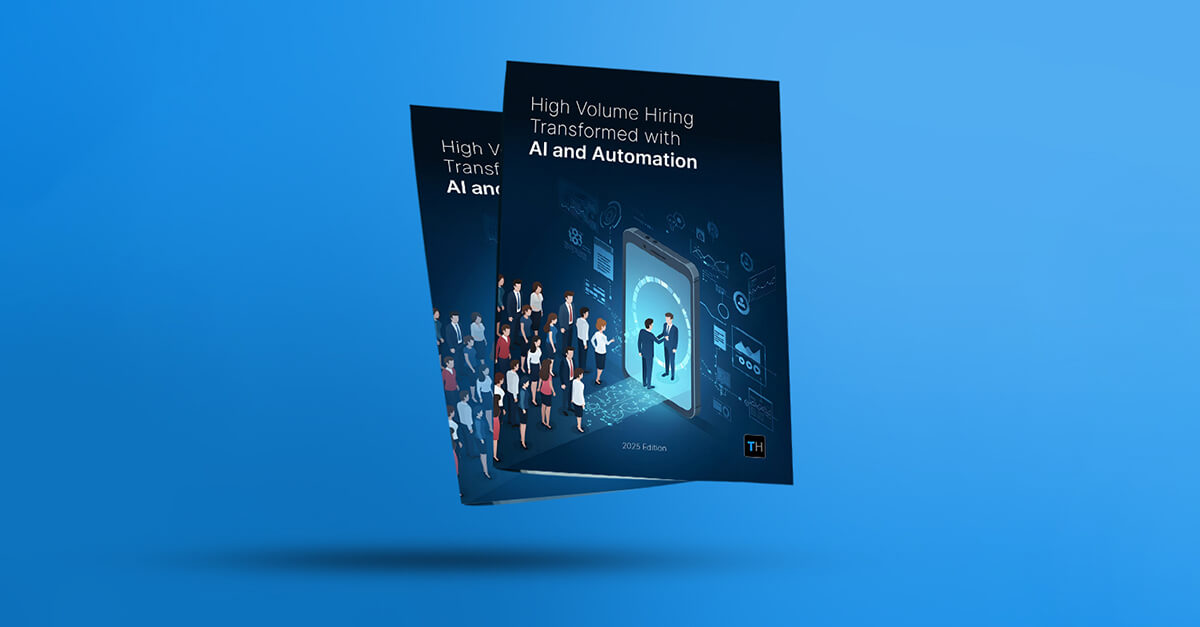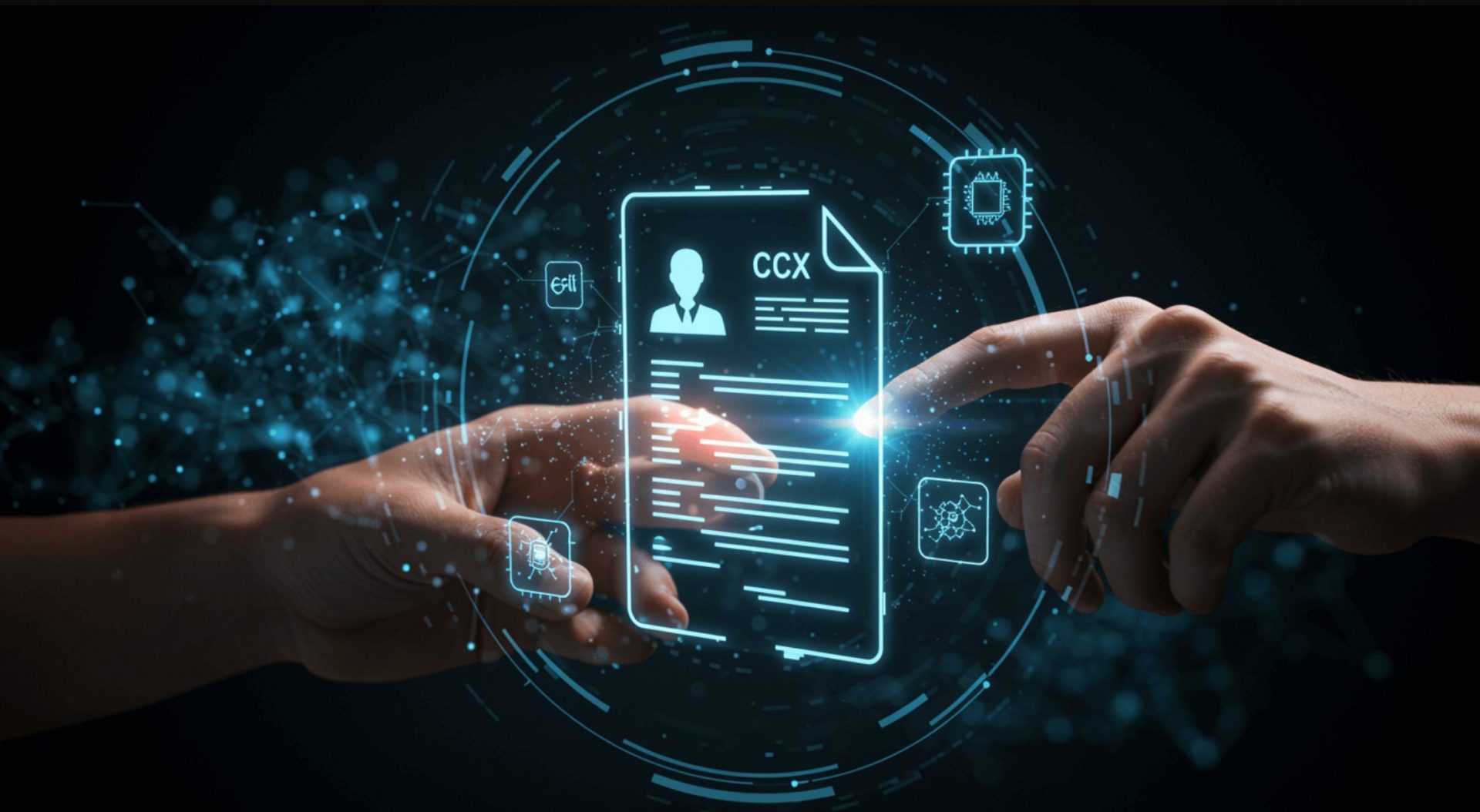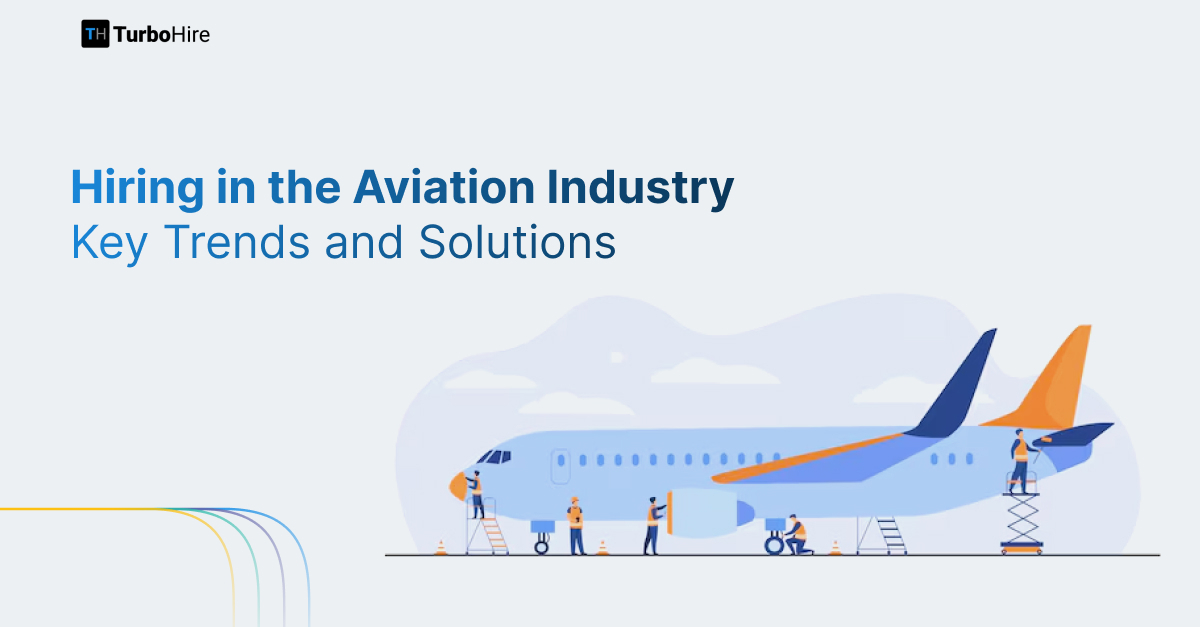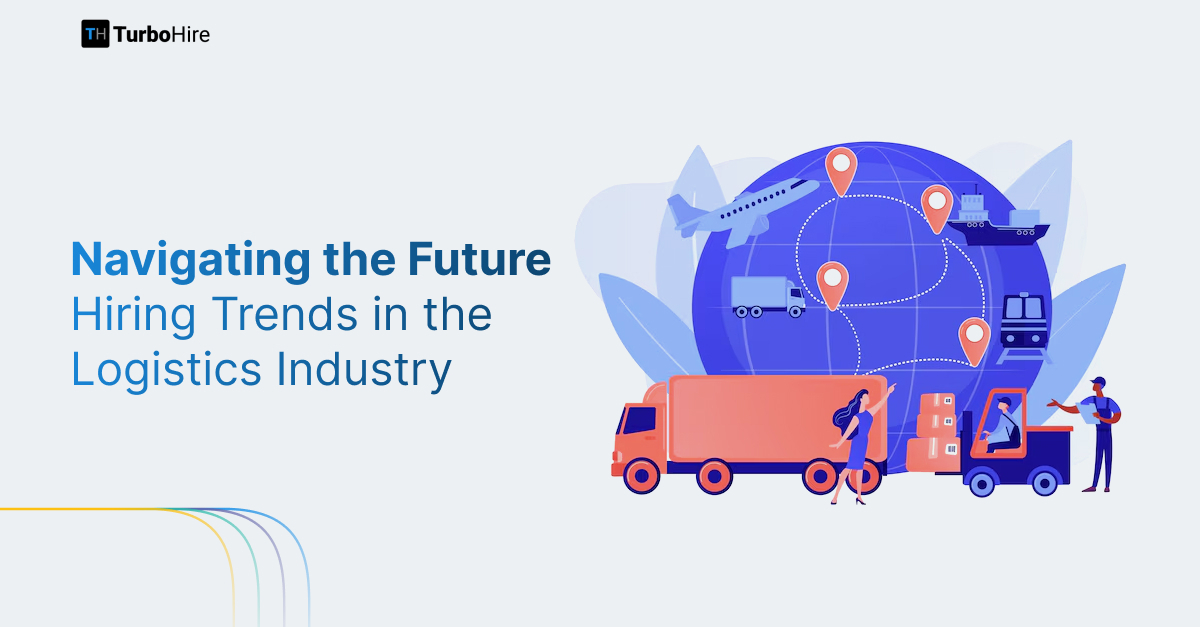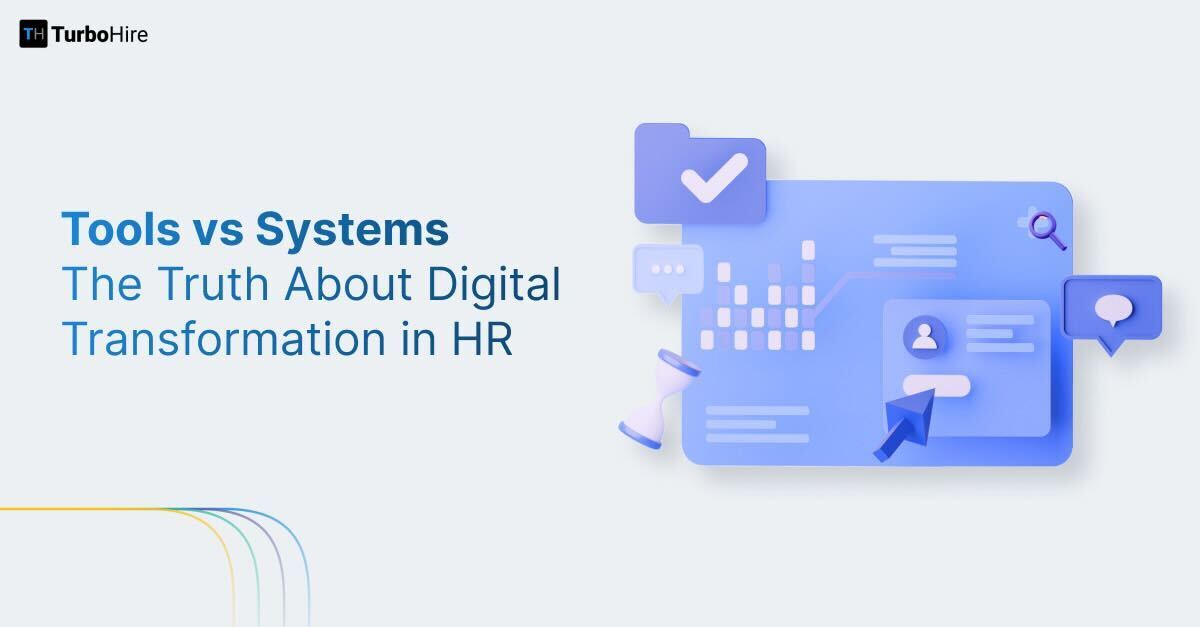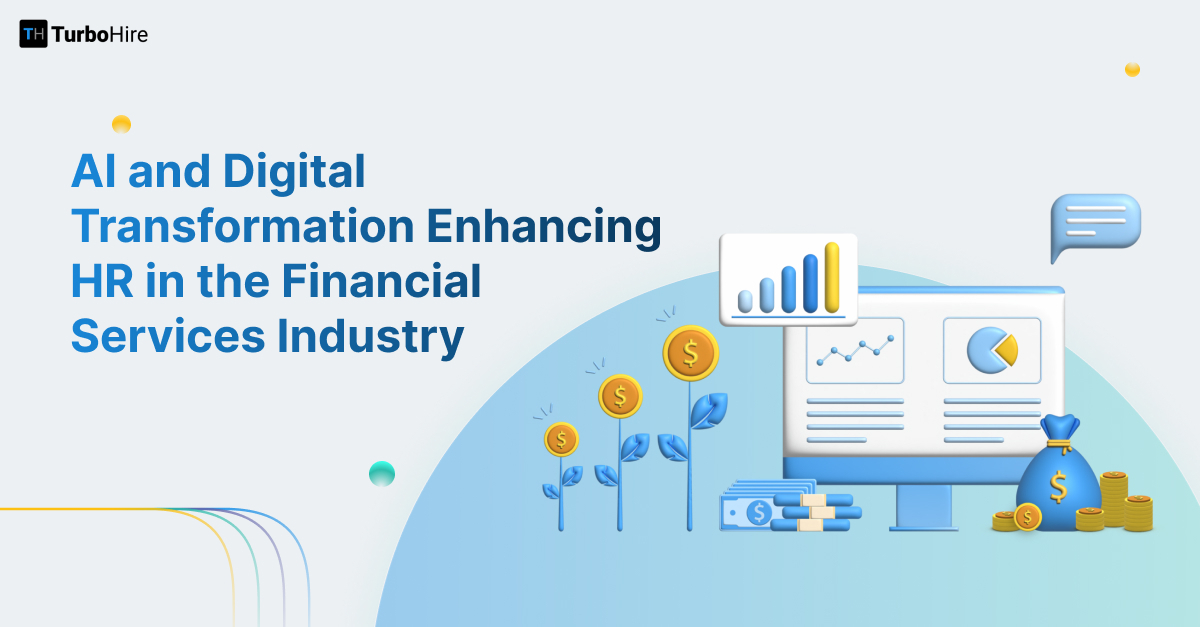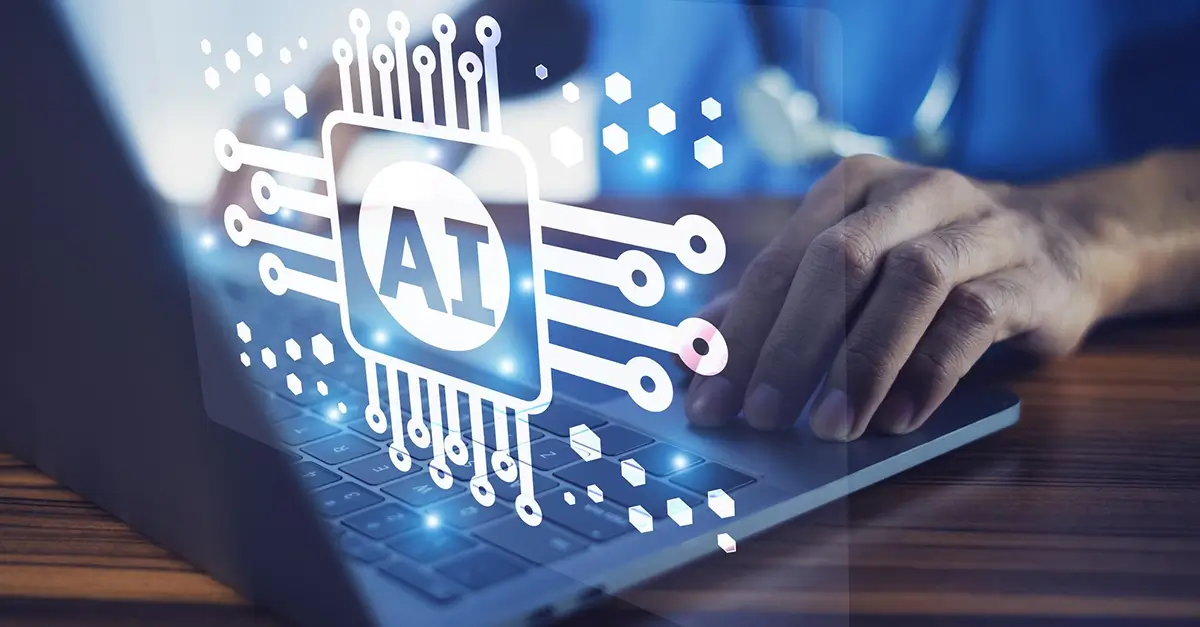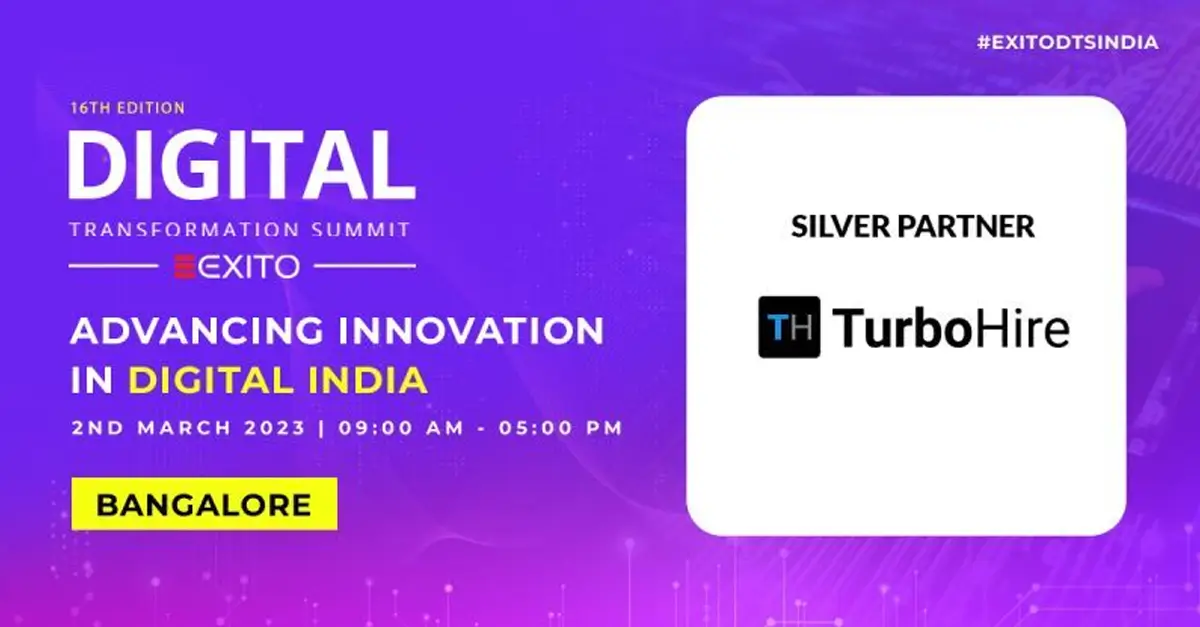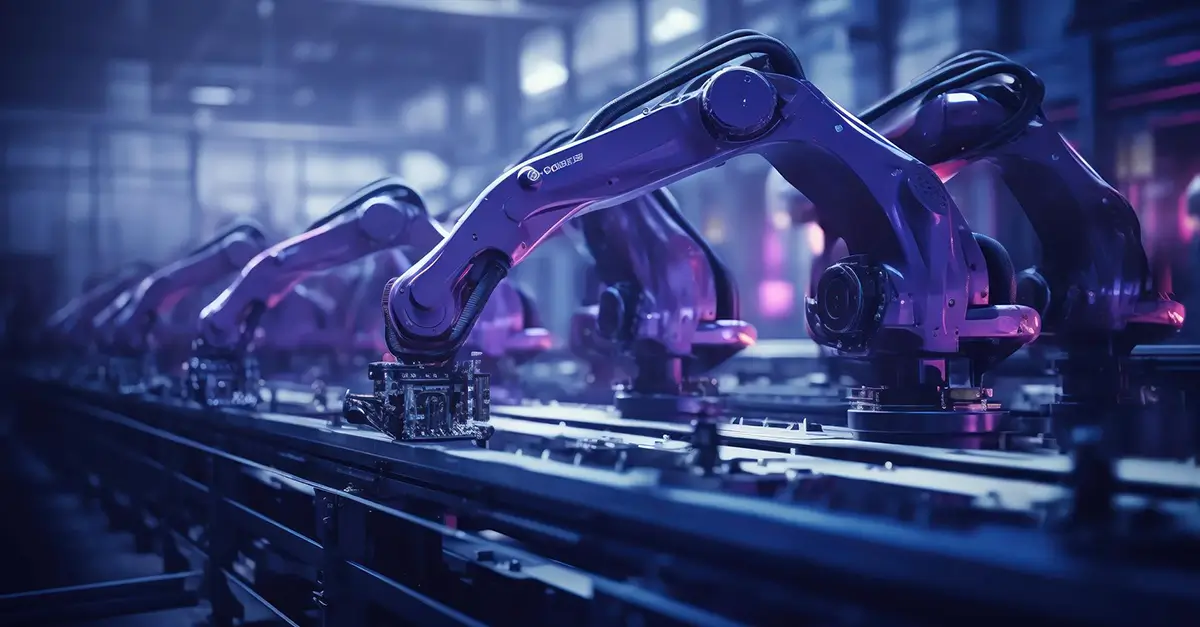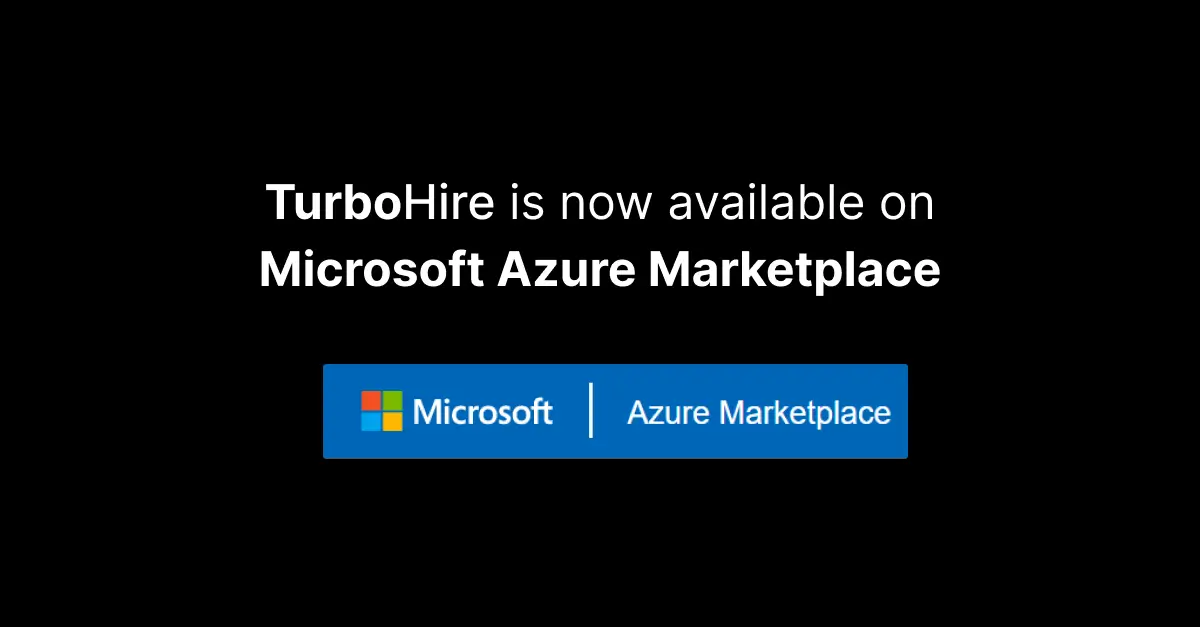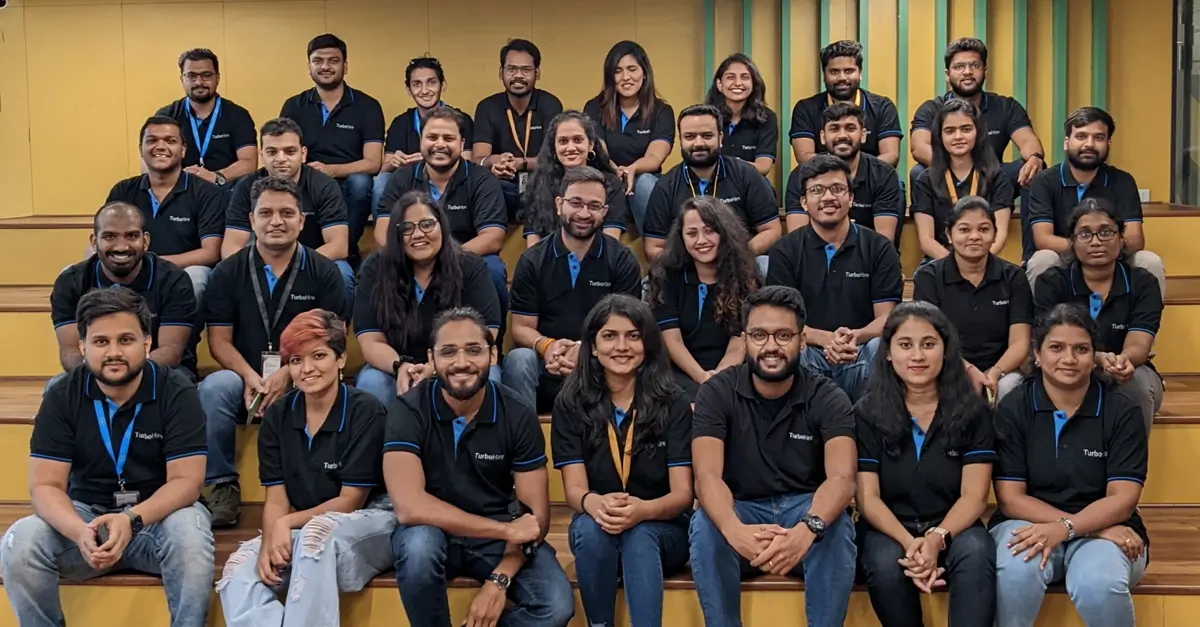Introduction
In the dynamic world of modern business, the push towards HR transformation highlights a critical evolution from dated, inefficient HR practices to a strategic, technology-infused approach that dovetails with overarching organisational objectives. At the forefront of this transformation is the integration of cutting-edge recruitment software, the application of AI in recruitment, and the adoption of recruitment automation technologies, all aimed at enhancing employee engagement, streamlining HR operations, and fostering a culture of continuous improvement and innovation. By harnessing the power of HR-tech, organisations are not only revolutionising their HR functions but also positioning HR as a pivotal force in driving business value and securing a competitive advantage.
Delving into the nuances of HR transformation, it is imperative to grasp its repercussions, the processes it encompasses, and the substantial influence it wields on an organisation’s prowess in navigating the complexities of today’s rapidly evolving business landscape. This shift towards digital tools, including AI and automation in recruitment, signifies a paradigm shift in HR practices, underscoring a strategic emphasis that promises to redefine the role of HR as an essential cornerstone of business success and innovation.
Embracing HR Digital Transformation
HR transformation signifies a crucial shift in the operational dynamics of an organisation’s Human Resources function, aiming to achieve strategic development and elevate employee engagement through digital innovation. This strategic endeavour seeks to discard the obsolete practices prevalent in traditional HR systems, paving the path for the adoption of efficient, technology-driven methodologies. Such transformations are not merely for the sake of change but are intrinsically linked to the achievement of more robust organisational goals, with a keen focus on leveraging HR-tech, including recruitment software, AI in recruitment, and recruitment automation.
The evolution of HR transformation is revolutionising how organisations manage their human resources functions by employing cutting-edge technologies, data analytics, and digital tools to enhance operations and employee experiences. This strategic overhaul extends beyond the mere introduction of new technologies or the automation of routine operations; it represents a fundamental reimagining of HR’s role in supporting the workforce and contributing to corporate objectives. By utilising analytics, artificial intelligence in recruitment, and digital platforms, companies can significantly improve recruitment processes, onboarding, personnel management, and employee engagement. The objective is to cultivate a more agile, data-driven, and employee-centric HR department capable of rapidly adapting to the fluctuating demands of a digital and global corporate landscape, with employee experiences remaining a pivotal element of HR strategy.
The importance of HR transformation transcends operational enhancements to achieve better strategic alignment with corporate goals. It repositions the HR department from its traditional support role to a key driver of business value, underscoring the critical role of personnel in securing a competitive edge. With 77%1 of business leaders acknowledging the pivotal role of talent retention for their organisation’s future, the imperative for a successful HR transformation is more pressing than ever. HR leaders are tasked with evolving their roles and the HR function to synergize people, strategy, processes, and technology with overarching business aims. This strategic shift is vital for enhancing operational excellence and exerting a profound impact on the organisation, establishing HR transformation as a cornerstone of business agility and success in the contemporary workplace.
The Evolution and Emergence of HR Transformation Roles
As the landscape of Human Resources evolves to meet the changing needs of the workforce, so too do the roles and titles within HR departments, reflecting new priorities and responsibilities. In an era where enhancing the employee experience has become a paramount concern for businesses, job titles incorporating the word “people,” such as People Operations Manager or Chief People Officer, are gaining popularity. These titles underscore a pivotal shift towards prioritising the well-being and engagement of employees.
Moreover, the term “transformation” is increasingly being woven into HR-related job titles, signifying the critical emphasis organisations place on their evolution efforts. Roles like HR Transformation Manager and Vice President of HR Transformation are on the rise, showcasing the urgency of modernising workplace structures and adapting to the anticipated dynamics of future work environments. This movement is supported by a recent McKinsey survey, which found that 86% of companies2 that have a Chief Transformation Officer appointed someone to this position in the past three years, underscoring the significance of transformation initiatives in corporate strategy.
The integration of recruitment software, AI in recruitment, and recruitment automation technologies is a testament to the HR department’s shift towards more strategic, technology-driven approaches. The adoption of HR-tech is not just about streamlining processes but also about redefining the HR function to better support strategic business goals, enhance employee experiences, and foster a culture of continuous innovation and improvement.
As organisations navigate the complexities of the digital age, the emergence of these specialised roles within HR transformation highlights the sector’s move towards a more analytical, data-driven approach. By leveraging AI and automation in recruitment and other HR processes, businesses are not only improving efficiency but are also positioning themselves to attract, retain, and develop top talent more effectively. This strategic pivot emphasises the role of HR not just as an administrative function but as a critical driver of business value, with a direct impact on the organisation’s ability to compete and thrive in a rapidly evolving business landscape.
The Critical Role of HR Transformation in Modern `Businesses
1. Enhanced Delivery of HR Services through HR-Tech
The integration of advanced digital solutions, including recruitment software and HR-tech, significantly upgrades the delivery of human resource services. These technologies ensure services are provided with greater accuracy and speed, elevating the standard of support for employees. This swift and precise assistance is crucial for maintaining an efficient workforce and contributes to a robust organisational structure.
2. Augmented Organisational Efficiency with Recruitment Automation
Recruitment automation streamlines service delivery and reduces the frequency of errors, freeing up valuable time for staff. This efficiency allows companies to focus on areas that promote organisational growth and innovation. The strategic reallocation of resources fosters a culture that prioritises efficiency and continuous improvement, demonstrating the transformative power of HR technology in enhancing organisational processes.
3. Clarity in Roles and Responsibilities through HR Transformation
HR transformation leads to a clearer definition of roles and responsibilities within the department. This clarity enhances teamwork and coordination, minimises overlap, and provides HR professionals with a deeper understanding of how their roles advance the broader goals of the organisation. Such insights are crucial for aligning individual performance with the company’s overarching objectives, showcasing the strategic value of HR-tech in defining organisational structure.
4. Improved Employee Experience via AI in Recruitment
The adoption of AI in recruitment and HR practices equips teams with the tools to meet employee needs with unprecedented agility and care. By encouraging open communication and creating a supportive environment that values feedback and well-being, HR initiatives powered by AI significantly boost workplace morale and engagement. This positive employee experience is key to building a dedicated and productive workforce.
5. Transition to a Strategic Function with Data Analytics
HR departments undergoing transformation are poised to play a pivotal role in strategic planning, thanks to data analytics. This shift allows HR to influence organisational culture, drive success, and align HR strategies with business objectives. The strategic use of data in planning offers a more informed approach to talent management, ensuring the organisation remains adaptive and successful.
Identifying the Right Time for HR Transformation
- When inefficiencies, outdated manual operations, and data discrepancies begin to hamper a company’s progress and capabilities, it becomes evident that a transformation within the human resources domain is imperative. The emergence of these issues within HR processes signifies a pressing need for a fundamental overhaul aimed at enhancing productivity and performance, specifically through the integration of HR-tech solutions such as recruitment software, AI in recruitment, and recruitment automation.
- The necessity for a pivotal shift in HR practices becomes paramount when the existing human resources framework is no longer in alignment with an enterprise’s strategic goals, thus hindering its ability to drive corporate achievements. For companies striving to elevate the human resources function to a central role in the orchestration of talent acquisition, retention, and empowerment, a profound transformation is essential to rectify this misalignment, leveraging the latest in HR-tech to foster a more dynamic and responsive HR department.
- Indicators of the need for an HR metamorphosis include diminishing employee engagement, rising attrition rates, or a prevalent sense of dissatisfaction among the workforce. Addressing these challenges requires a transformation aimed at implementing innovative methodologies that improve the workplace environment. This includes enhanced communication, recognition, and a focus on strategies that promote a more rewarding employee experience, facilitated by cutting-edge recruitment automation and AI-driven insights.
- The call for HR transformation becomes urgent as organisations navigate the rapid currents of technological advancement, the complexities of globalisation, and the evolving dynamics of the workplace, including the shift towards remote and hybrid work models. To adeptly manage these shifts and oversee a workforce that is both culturally diverse and geographically dispersed, a strategic overhaul of HR practices, underscored by the adoption of advanced HR-tech, is indispensable. This not only streamlines HR operations but also ensures that the HR department is fully equipped to meet the challenges of the modern business landscape head-on, positioning it as a key driver of organisational success.
The Five Pillars of HR Transformation
HR transformation is an essential and comprehensive journey, reflecting the evolving nature of human resources (HR) management amidst the rapidly changing demands of today’s business world. This process is built upon five critical pillars, each contributing to the strategic reimagining of HR practices.
1. Evolving HR Operating Model
Central to HR transformation is the development of an advanced HR operating model. This framework is vital for defining the operation of HR functions within an organisation, outlining roles, responsibilities, and the structural hierarchy. The optimal HR operating model—be it centralised, decentralised, or a hybrid—depends on an organisation’s size, culture, and strategic aims. Incorporating “HR-tech” solutions can significantly enhance this model, enabling HR to meet the demands of modern business efficiently.
2. Upgrading HR Capabilities with Recruitment Software and AI
Upgrading HR capabilities is paramount, particularly through the integration of “recruitment software” and “AI in recruitment.” This transformation involves equipping HR professionals with skills in strategic workforce planning and digital HR solutions, enabling them to navigate the complexities of today’s business landscape. The adoption of AI and recruitment automation tools not only streamlines the hiring process but also ensures that HR strategies are aligned with organisational objectives.
3. Leveraging HR Technology for Efficiency and Insight
The adoption of cutting-edge “HR technology,” including cloud-based management systems and analytics platforms, is a cornerstone of HR transformation. These technologies facilitate the automation of routine tasks, improve operational efficiency, and provide actionable insights through data analytics. Embracing HR-tech solutions allows HR departments to contribute strategically to organisational success.
4. Strategic HR Leadership and Digital Transformation
Effective HR leadership is crucial for the successful navigation of HR transformation. Leaders must champion innovation, align HR strategies with business goals, and foster a culture of continuous improvement. Strong leadership ensures that HR not only adapts to technological advancements but also plays a pivotal role in organisational growth.
5. Embracing a Data-Driven Culture with Recruitment Automation
A data-driven approach is essential, particularly in leveraging “recruitment automation” for informed decision-making. HR data analytics enable organisations to identify trends, optimise talent management strategies, and enhance employee engagement. By making data-centric decisions, HR can tailor strategies to organisational needs, ensuring sustained improvement and efficiency
Examples of Digital Transformation in HR
Employee engagement platforms are another shining example of the evolution within HR practices, showcasing how technological advancements are reshaping traditional employee engagement strategies. These platforms represent a leap forward from conventional methods, offering a dynamic, interactive approach to fostering a motivated and committed workforce.
Here’s a closer look at how employee engagement platforms are revolutionising HR practices:
1. Interactive Communication Channels: Unlike traditional one-way communication methods, these platforms provide a two-way communication channel that encourages open dialogue between employees and management. This interaction fosters a sense of community and belonging among staff, allowing them to voice their opinions, share ideas, and provide feedback in real-time. Such a transparent communication culture helps identify issues early and address them promptly, leading to a more engaged workforce.
2. Recognition and Rewards Systems: Employee engagement platforms introduce sophisticated systems for recognizing and rewarding employees for their contributions and achievements. These platforms allow managers and peers to acknowledge individual efforts publicly, enhancing motivation and reinforcing positive behaviours across the organisation. By automating recognition programs, companies can ensure consistent and fair acknowledgment of employee achievements, contributing to higher satisfaction and loyalty.
3. Personalized Learning and Development: These platforms offer personalised learning experiences, allowing employees to access training and development resources tailored to their specific career paths and interests. This customization supports continuous professional growth and skill development, keeping employees engaged and invested in their long-term career progression with the company. Personalised learning opportunities also help in closing skills gaps, thereby enhancing overall organisational performance.
4. Enhanced Performance Management: With the integration of analytics and feedback tools, employee engagement platforms provide a more nuanced approach to performance management. Managers can set and track goals, conduct performance reviews, and offer constructive feedback through a single interface. This streamlined approach not only simplifies the performance management process but also makes it more transparent and effective, leading to better employee performance and engagement.
5. Well-being and Health Programs: Recognizing the importance of mental and physical health in employee engagement, these platforms often include features to support employee well-being. From mindfulness exercises and stress management resources to fitness challenges and health tracking, these tools promote a holistic approach to employee health. By prioritising well-being, companies can reduce burnout and absenteeism, fostering a healthier, more productive workforce.
6. Social and Community Building Features: Employee engagement platforms frequently incorporate social features that encourage team building and camaraderie. Whether through virtual team events, interest-based groups, or social feeds, these features help create a connected workplace culture, even in remote or hybrid work settings. Strong social bonds among employees can lead to increased collaboration, innovation, and engagement.
Employee engagement platforms are not merely tools but are integral components in creating a modern, dynamic work environment that values communication, recognition, personal growth, and well-being. By leveraging these platforms, companies can cultivate a more engaged, motivated, and cohesive workforce, ready to meet the challenges of the contemporary business landscape.
The Phases of HR Digital Transformation
The evolution of HR into a digitally empowered function unfolds through a series of well-defined stages, each building upon the last to foster an environment of innovation and adaptability.
Phase 1: Traditional Operations
Initially, HR departments adhere to conventional practices, characterised by manual processes, paper-based documentation, and basic HR Information Systems (HRIS). In this stage, automation is minimal, with a primary focus on administrative tasks such as payroll management and employee benefits administration, often without the aid of advanced recruitment software or HR-tech solutions.
Phase 2: Engagement and Activation
Recognizing the value of digitalization, HR starts to embrace essential HR technologies. The automation of key processes, including hiring through recruitment software, managing employee records, and performance assessments, begins to take shape. Digital platforms have become integral to communication and record-keeping, marking the initial steps towards recruitment automation.
Phase 3: Strategy Development
With a commitment to digital advancement, HR invests in sophisticated solutions, laying the groundwork for a comprehensive digital transformation strategy. Data-driven decision-making emerges, fueled by analytics and AI in recruitment, enabling deeper insights into workforce trends and productivity enhancements.
Phase 4: Strategic Integration
HR transitions into a strategic partner, leveraging data analytics and automation to refine workforce planning, talent acquisition, and employee engagement. The adoption of HR-tech not only supports HR strategies but aligns them with the organisation’s broader goals, showcasing the impact of recruitment automation and AI technologies.
Phase 5: Unified Efforts
Digital transformation within HR aligns seamlessly with the organisation’s strategic vision. Collaborative efforts across departments, including IT and finance, integrate cutting-edge technologies like AI and machine learning. This cross-functional synergy facilitates advanced analytics, succession planning, and the development of personalised employee experiences, underscoring the importance of HR-tech in achieving organisational objectives.
Phase 6: Innovation and Flexibility
The digital transformation journey extends beyond HR, becoming ingrained in the organisation’s ethos and impacting areas such as product development and marketing. An innovation hub continuously explores technological advancements, ensuring the organisation remains at the forefront of change, ready to adapt and innovate with recruitment software, AI in recruitment, and HR-tech leading the way.
Navigating the Path to HR Digital Evolution
Embarking on the HR digital evolution journey is pivotal for modern organisations aiming to enhance their HR operations through technology. This journey involves a series of critical steps designed to ensure the successful integration of digital tools like recruitment software, AI in recruitment, and HR-tech solutions to automate and optimise HR processes.
1. Audit Existing HR Operations
The first step involves a comprehensive audit of current HR functions. It’s essential to document all existing practices, workflows, and communication channels, especially those pertaining to recruitment, onboarding, performance management, and employee data management. Utilising visual aids like diagrams and flowcharts can simplify this complex mapping process.
Soliciting feedback from HR personnel and employees is invaluable for identifying inefficiencies and bottlenecks. Moreover, analysing historical HR data can uncover trends needing attention, such as high turnover rates or prolonged recruitment cycles, pinpointing areas where digital solutions, like recruitment automation tools, could be beneficial.
2. Set Defined Objectives
The establishment of clear, measurable goals is crucial. These should be SMART (Specific, Measurable, Achievable, Relevant, Time-bound) and align with the organisation’s overarching strategic objectives, such as reducing the recruitment cycle by implementing AI in recruitment or enhancing employee satisfaction through better HR-tech integrations.
3. Assemble a Dedicated Digital Evolution Team
Forming a team dedicated to digital evolution is key. This team should include HR professionals, IT experts, data analysts, and change management specialists, all working together to oversee the technological and organisational shifts. Assigning specific roles and responsibilities ensures accountability and efficiency.
4. Select the Right Technology
Choosing appropriate technology is fundamental. After conducting a thorough needs analysis, consider various digital solutions like HR information systems (HRIS), applicant tracking systems (ATS), and data analytics platforms. Evaluation criteria should include functionality, scalability, compatibility, user experience, and cost-effectiveness.
5. Prioritise Data Security and Compliance
Given the sensitivity of HR data, prioritising security and regulatory compliance is non-negotiable. Establish robust data governance frameworks to manage access, storage, and recovery protocols, ensuring adherence to laws like GDPR and HIPAA.
6. Implement Change Management Strategies
Effective change management strategies are essential for transitioning to new HR practices and technologies. Engage key stakeholders early, develop comprehensive communication plans, and provide training and support to ease the adoption of new systems like recruitment software and AI-driven HR tools.
7. Leverage Analytics for Strategic Insights
Utilising analytics enables informed decision-making. Collect and analyse HR data to identify trends, assess performance, and guide strategic HR decisions, enhancing talent management and overall HR effectiveness.
8. Evaluate and Adapt
Continuous evaluation of the digital evolution process is crucial. Track progress against established KPIs, such as improved recruitment efficiency or increased employee engagement, and be prepared to adjust strategies based on feedback and results.
HR digital evolution is an ongoing journey that requires commitment and adaptability. By strategically integrating technologies such as recruitment automation, AI in recruitment, and comprehensive HR-tech solutions, organisations can achieve significant improvements in HR operations and employee experiences, aligning HR practices with the digital age.
Advantages of Embracing HR Digital Transformation
Embracing digital transformation within HR departments unlocks a multitude of advantages, setting the stage for more efficient, responsive, and strategic HR operations. Here’s how the integration of recruitment software, AI in recruitment, recruitment automation, and HR-tech revolutionises human resources management:
1. Streamlined and Enhanced HR Operations
The journey towards digital transformation in HR catalyses the automation and optimization of critical HR functions, reducing dependence on manual processes and paperwork. The adoption of HR-tech, including advanced recruitment software and recruitment automation tools, significantly boosts operational efficiency. This allows HR professionals to focus on more strategic tasks. From hiring and employee onboarding to payroll management and benefits administration, every aspect becomes more efficient, ensuring quick and accurate outcomes that elevate HR’s role within the organisation.
Notably, a staggering 97%3 of businesses are planning to amplify their investment in recruitment technologies by 2024, with a keen interest in harnessing AI in recruitment to refine their hiring processes.
2. Empowering Workforce Through Technology
Digital transformation equips employees with tools to independently manage tasks such as updating personal information, accessing pay stubs, and submitting leave requests. This empowerment lightens the HR department’s load and fosters autonomy among employees. Moreover, the introduction of digital learning and development platforms significantly enhances workforce productivity, aligning with the strategic goals of the organisation.
3. Boosting Employee Engagement
Revamping HR processes with digital solutions markedly improves the employee experience. Easy-to-navigate interfaces and mobile access to HR services ensure quick responses to employee inquiries, boosting satisfaction levels. Digital tools facilitate personalised communication and recognition efforts, cultivating a more engaged and motivated workplace culture.
4. Data-Driven Strategic Decisions
The digital overhaul in HR yields an abundance of data, empowering organisations to make strategic, informed decisions. Utilising HR analytics and reporting tools offers insights into workforce trends, identifies improvement areas, and supports evidence-based strategies in hiring, performance evaluation, and talent management. This analytical approach ensures organisations remain agile and competitive.
5. Enhanced Compliance and Data Security
Digital HR platforms come equipped with advanced security features to protect sensitive employee data and comply with stringent data protection laws. Automated compliance monitoring tools minimise the risks of errors and non-compliance, simplifying the maintenance and tracking of adherence to labour laws and regulations. This not only reduces the likelihood of legal issues but also fortifies trust within the organisation.
By integrating recruitment software, AI in recruitment, recruitment automation, and HR-tech, organisations can navigate the complexities of the modern workplace more effectively, ensuring a future-ready, efficient, and compliant HR department.
Clarifying Misunderstandings Around HR Digital Transformation
Clear and open communication channels within an organisation are vital for fostering a transparent and trust-based relationship with employees. This transparency is key to building a positive perception of the employer’s brand.
Myth 1: Digital Transformation Is Merely About Technology Adoption
Reality: While the integration of advanced technologies like AI in recruitment and recruitment software is crucial, HR digital transformation encompasses much more. It represents a holistic strategy that involves redefining processes, fostering a culture of innovation, leveraging data insights, and aligning initiatives with the broader organisational objectives. Technologies such as recruitment automation tools and HR-tech platforms are enablers, facilitating a shift towards more strategic, data-driven, and efficient HR operations.
Myth 2: A One-Time Project with a Definite End
Reality: Contrary to the belief that HR transformation is a finite project, it is an ongoing journey. The landscape of technology, along with business needs and employee expectations, is constantly evolving. A successful transformation requires continuous evaluation, adaptation, and innovation to stay competitive and relevant in a dynamic marketplace.
Myth 3: Primarily Aimed at Cutting Costs
Reality: Although optimising costs is a benefit, the essence of HR digital transformation lies in enhancing operational efficiency, driving innovation, and elevating employee engagement. By leveraging HR-tech, including AI-powered recruitment tools and automation software, organisations can streamline HR processes, improve talent acquisition outcomes, and foster a more engaged, satisfied workforce. The primary goal is to add value and stimulate sustainable organisational growth, not just to reduce expenses.
Myth 4: Guaranteed Success
Reality: Success in HR digital transformation is not a given. It requires careful planning, the willingness to adapt, and a commitment to continuous learning. Challenges and setbacks are part of the journey, necessitating a proactive, resilient approach to overcome them. Organisations must be prepared to experiment, learn from failures, and persistently refine their strategies to navigate the complexities of digital transformation successfully.
Conclusion
HR transformation is a critical shift, moving beyond traditional practices to a technology-driven approach to human resource management. Embracing recruitment software, AI in recruitment, recruitment automation, and HR-tech, organisations are redefining HR’s role to align with strategic business objectives. This shift towards digitalization promises enhanced operational efficiency, improved employee engagement, and better strategic workforce management, positioning HR as a pivotal contributor to organisational success. In today’s digital era, an agile and innovative HR function is essential for businesses to not only adapt but excel amidst global challenges, making HR transformation indispensable for future readiness.
Explore more-
- Explore our latest article, “Revolutionising Grey Collar & High Volume Hiring with AI in Recruitment,” to learn about the increasing significance of AI in streamlining and enhancing hiring processes in these growing sectors.
- Additionally, delve into “Pharma Talent 2024” to discover how the pharmaceutical industry is experiencing significant changes and how recruitment strategies are evolving to meet these new challenges.
References–


